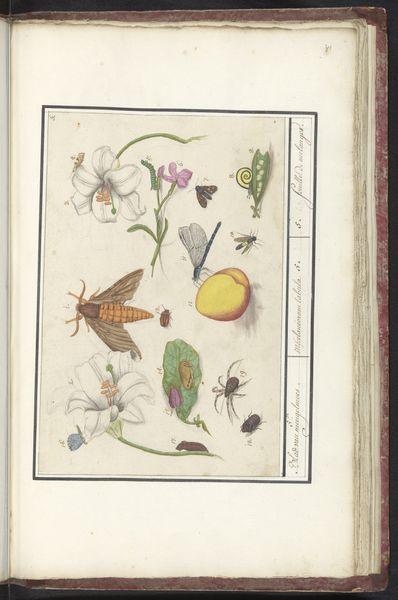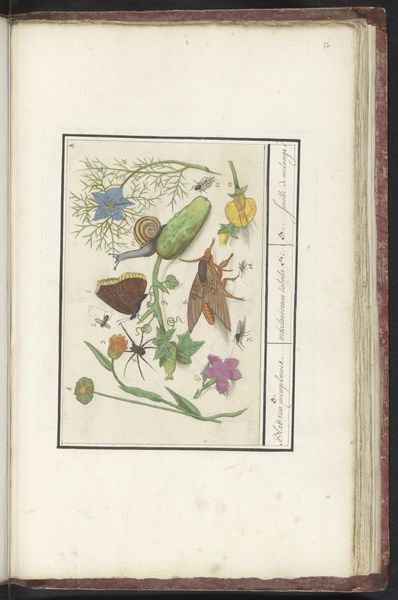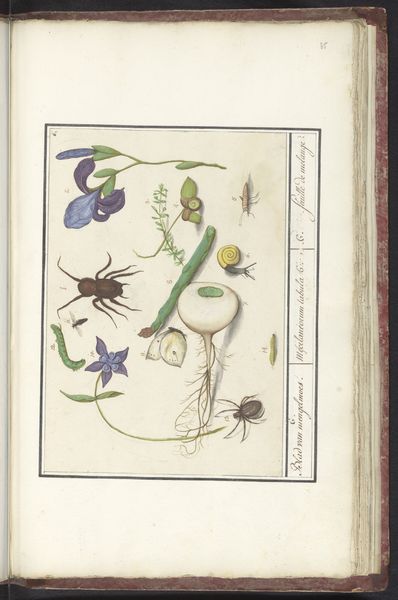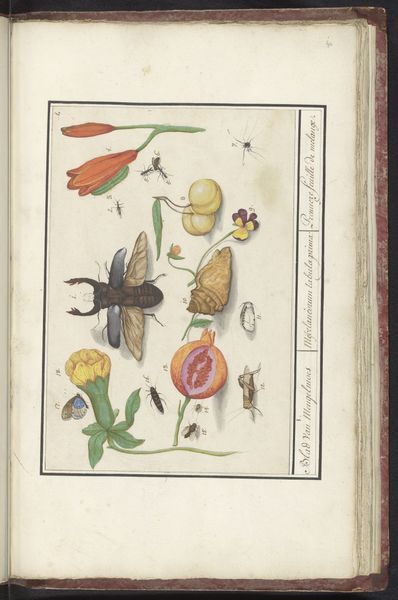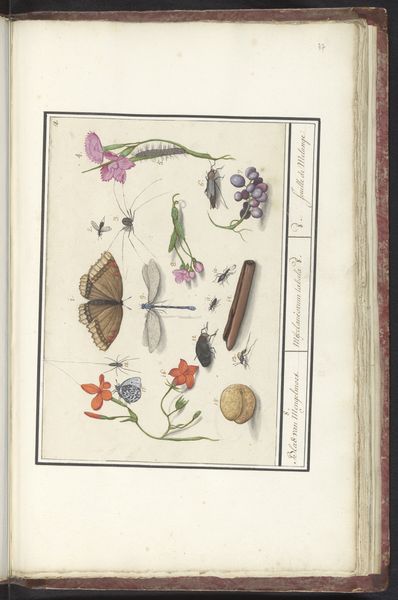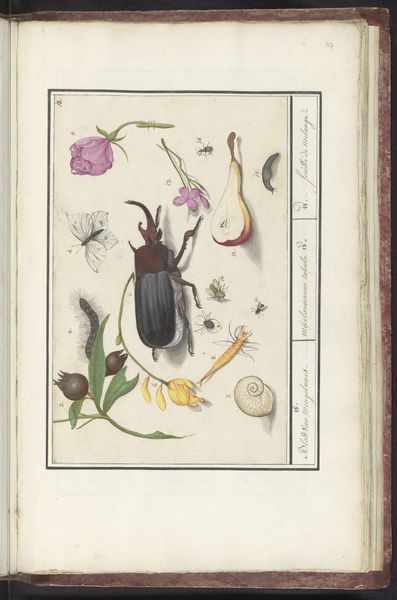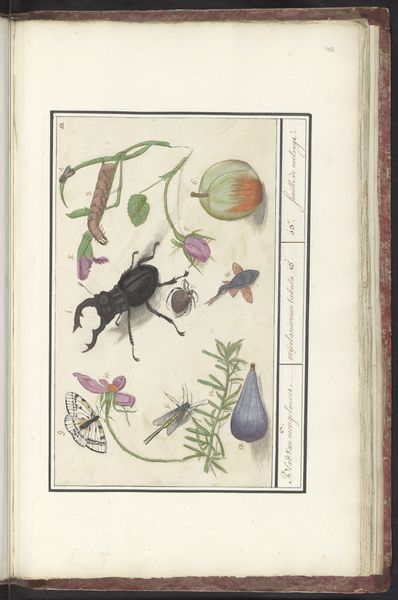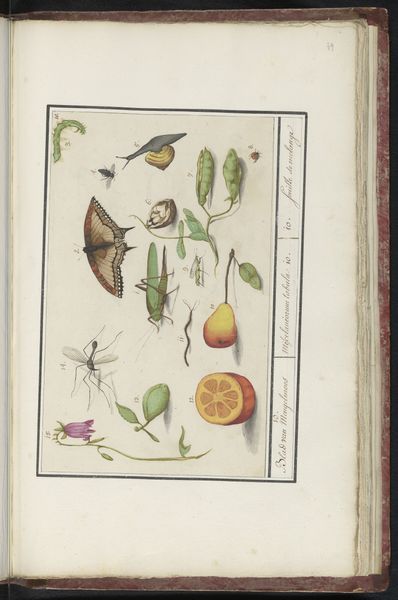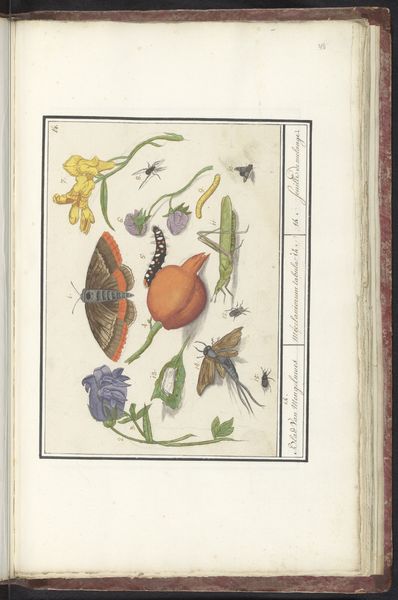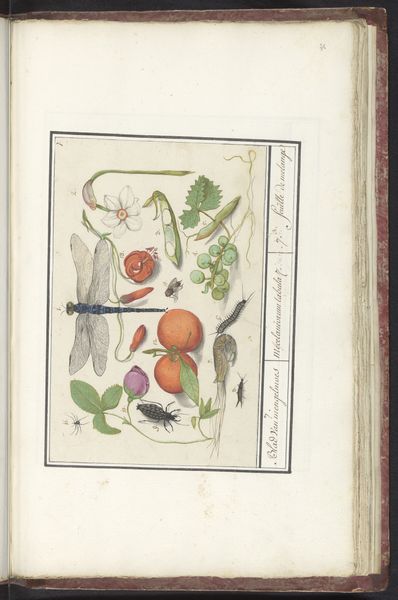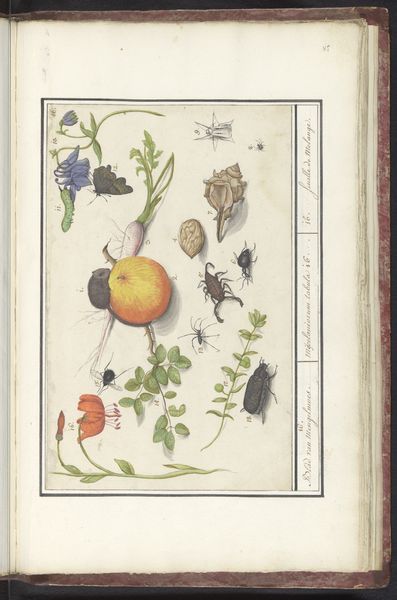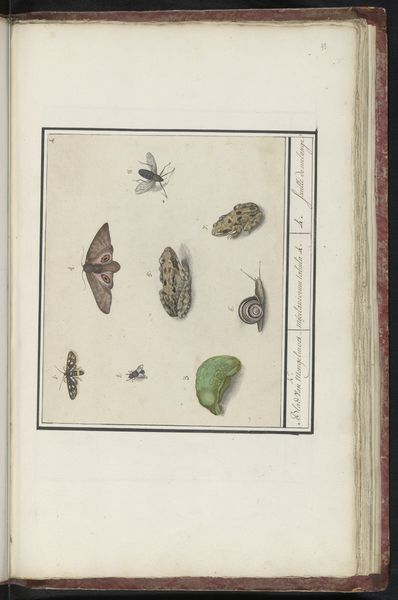
drawing, coloured-pencil, print, paper, ink
#
drawing
#
coloured-pencil
# print
#
flower
#
paper
#
11_renaissance
#
personal sketchbook
#
ink
#
fruit
#
coloured pencil
Dimensions: height 160 mm, width 269 mm
Copyright: Rijks Museum: Open Domain
Curator: This sheet is titled Natuurhistorische ensemble (nr. 15) by Elias Verhulst, made between 1596 and 1610, rendered in ink, coloured pencil, and perhaps printmaking, all on paper. What catches your eye first? Editor: You know, it has the strange charm of those old curiosity cabinets, but on a page. A kind of ordered chaos, nature pinned down but still wiggling. There’s a lovely blue flower, top left – its droop hints at something melancholic. Curator: Melancholy, perhaps because of its compositional placement? Note how the artist orchestrates the tableau, dividing the plane into quadrants with a dragonfly acting almost as a central axis. Each specimen functions both independently and interdependently. Editor: Yes! They each have their own story. Look at the nibbled apple core…did a little mouse get to it? Maybe that plump little fellow lurking underneath? There's a story of miniature drama playing out. Did you notice the snail on the opposite end? So slow-moving by contrast, maybe that's why the flower looks sad? Curator: Indeed, the scale-play sets up a formal contrast. The microcosm is here magnified to didactic purpose. The artist's hand intervenes to classify the natural order using taxonomic numbering alongside each lifeform and the printed title: a conscious imposition of structure. It reflects Renaissance curiosity and control over nature. Editor: I'm more fascinated by Verhulst as an individual peering through the lens of this age of discovery. The medium—colored pencil—softens what could have been a sterile inventory into a record of somebody paying attention to these small beings. The composition's asymmetrical balance invites me to follow this careful observer around this tiny, self-contained universe. Curator: Agreed. It is impossible not to admire the technique. The scientific imperative and creative execution fuse, don't they? The paper functions as both canvas and classification board. It transcends a simple, pragmatic recording and becomes something else. Editor: Precisely. A meeting between science and soul... a testament to how even the most "objective" gaze still leaves a poetic residue. It serves as a window into another world, centuries later! Curator: A remarkable distillation that manages to reveal, conceal, and intimate at once.
Comments
No comments
Be the first to comment and join the conversation on the ultimate creative platform.
